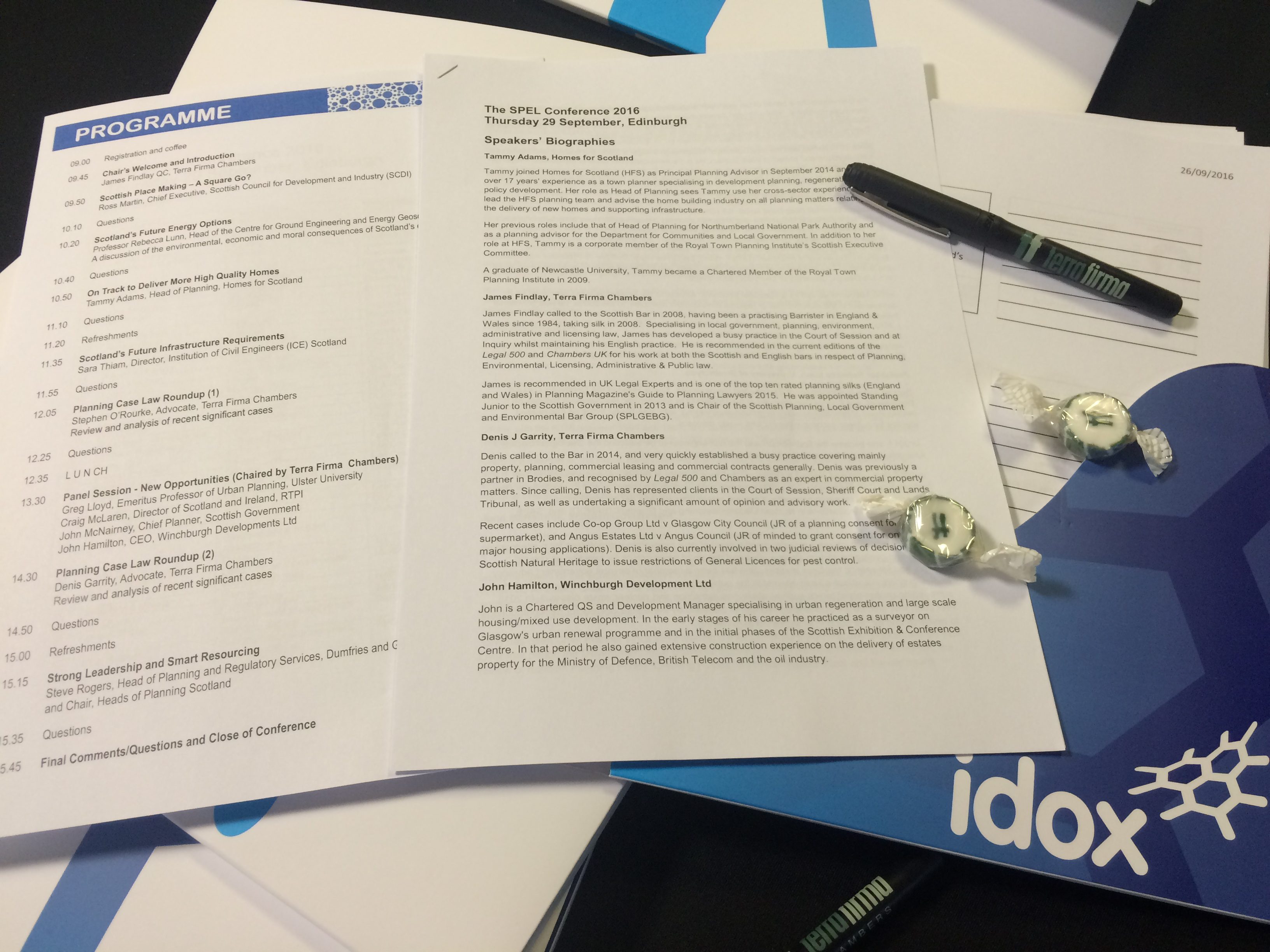The theme of this year’s conference posed a question to speakers and delegates of the conference: is the current planning climate in Scotland presenting “new opportunities, or more of the same?”
Delegates came together in the COSLA building in Edinburgh to discuss all areas of planning and environmental law in Scotland. The gathering included a range of organisations and sectors, including lawyers and solicitors, planners, engineers, academics and civil servants.
The morning session focused on energy, infrastructure and economic development. Ross Martin (@SCDIChief), chief executive of the Scottish Council for Development and Industry kicked the day off with a discussion of place making in Scotland. He highlighted the economic benefit of good planning, noting that when it is done well planning has a core role in economic development strategies and can facilitate growth within an area.
This was followed by a discussion from Professor Becky Lunn from the University of Strathclyde who gave delegates some interesting food for thought in her discussion of the environmental, economic and moral consequences of Scotland’s energy choices. A day after Ineos imported its first container of US shale gas to its Grangemouth refinery, Professor Lunn told delegates, that no energy solution is problem free, but “if we (Scotland) say no to the domestic production of gas and nuclear energy we are saying yes to something else”- the demand needs to be met regardless of whether the energy is produced in the UK or not. She questioned the moral arguments that it could be acceptable to import shale from elsewhere, while we are not content enough with the level of safety, the security of regulation and its wider environmental impact to do it ourselves (something which was picked up on by Ruth Davidson later that same day in FMQ’s). Professor Lunn advocated a strong public element to discussion, and a robust and well-informed debate around long term energy choices. She also warned against “crisis led” energy policy-making dictated by rhetoric of “fear and shortage”.
Head of planning at Homes for Scotland, Tammy Adams (@TammyHFS) discussed the delivery of high quality homes in Scotland within the wider planning context. She highlighted the challenges and opportunities for house building, arguing that delivering new homes in Scotland should be “a golden thread” running through the Scottish planning system, and that an effort should be made to better align market realities and site strategy, but maintain flexibility of delivery.
The penultimate session of the morning was delivered by Sara Thiam, director of the Institution of Civil Engineers Scotland. She looked at the role of infrastructure and planning. Sara discussed the potential of devolution to city regions to grow the economy by allowing city regions to plan and build infrastructure which reflects their local social and economic needs. She also spoke about the need to be strategic about infrastructure choices, not just pushing increased finance for infrastructure, but targeting it strategically, investing in green infrastructure where possible, and thinking long-term about projects and desired outcomes.
The morning was brought to a close by event sponsors Terra Firma Chambers who provided some useful insights into up-to-date case law, including notable cases that many delegates could draw on for their day to day decision making and planning submissions.
The afternoon session opened with a panel session which featured insights from four speakers: Greg Lloyd, Emeritus Professor of Urban Planning at Ulster University; Craig McLaren, RTPI Director of Scotland and Ireland; John McNairney, Chief Planner at the Scottish Government; and John Hamilton, CEO Winchburgh. The discussions focussed on the new opportunities presented in planning in Scotland, including the review of planning, building homes, creating more joined up planning and the planning process more generally. Discussions were wide ranging, generating a lot of interaction both within the panel and between the panel and the delegates. The discussions were wrapped up by a second case law update.
The final presentation of the day was delivered by Steve Rogers, Head of Planning and Regulatory Services at Dumfries and Galloway Council and Chair of Heads of Planning Scotland. He spoke about his experiences with smart resourcing and the importance of leadership in planning.
Overall it was a day full of insight and expertise, which provided everyone who attended with the opportunity to think critically about the state of planning in Scotland from a number of different positions. It posed questions to be considered, allowed delegates to reflect on their day to day practice and highlighted opportunities and potential barriers for planning in Scotland in the future.
An annual subscription to SPEL Journal is £145. For further details or a sample copy, please contact Christine Eccleson, SPEL Journal’s Advertising Manager, on 0141 574 1905 or email christine.eccleson@Idoxgroup.com
SPEL Journal is read by decision makers in Scottish planning authorities, planning law practices, planning consultancies, surveyors, civil engineers, environmental managers and developers across Scotland. It is also valued by many practitioners outside of Scotland who need to keep abreast of developments.
Share
Related Posts
By Ian Babelon A new-old concept for proximity “Are we there yet?” Parents may patiently nod to their children’s insistent nudges on a 20-minute journey to… somewhere. Quite rightly, researchers have asked: twenty minutes to what? The answer may well ....
Following the adoption of National Planning Framework 4 (NPF4) at the end of February, the Scottish planning system and planning services are dealing with transitioning to a development plan system without statutory supplementary guidance and where the relationship to current ....
By Ian Babelon In the first part of two blog posts, published on 22 May, Ian Babelon provided examples of good practice in retrofitting social housing. The second part of this blog post looks at estate-wide and area-wide social housing ....





